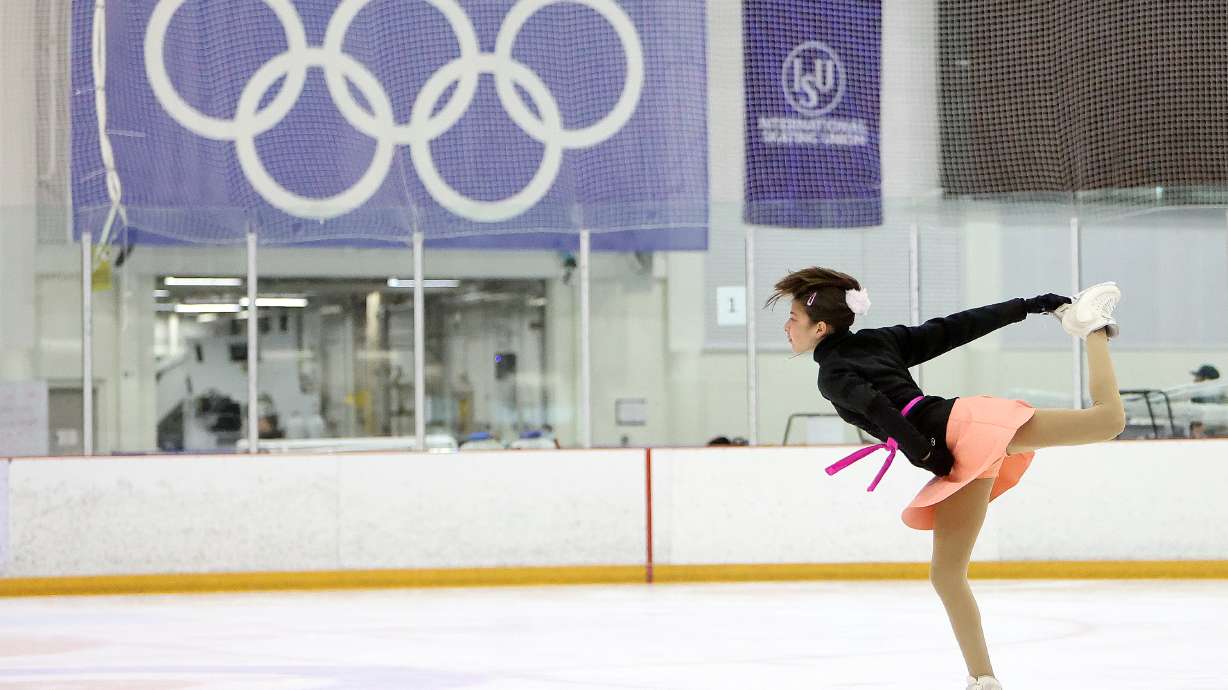Estimated read time: 6-7 minutes
This archived news story is available only for your personal, non-commercial use. Information in the story may be outdated or superseded by additional information. Reading or replaying the story in its archived form does not constitute a republication of the story.
SALT LAKE CITY — Utah wrapped up its first Winter Olympics experience with a $163 million surplus, while a $76 million endowment was created to help preserve its primary facilities from 2002.
This decision two decades ago means Utah won't need to build new facilities for the 2034 Winter Olympics and Paralympics, which drives down the cost of hosting the event, but it also means that the economic output of the Games could be slightly lower than the 2002 event, according to a new report outlining its economic impacts.
Hosting the Winter Games again in 2034 is expected to generate an overall economic output of $6.6 billion over the next decade, according to the University of Utah Kem C. Gardner Policy Institute report released on Wednesday.
"These numbers are just so unbelievable," said Brett Hopkins, chief finance officer and chief operating officer for the Salt Lake City-Utah Committee for the Games, during a roundtable event the university hosted about the report.
Salt Lake City isn't officially the host of the 2034 Olympics just yet. A Utah delegation is headed to Paris later this month to make one last pitch before the International Olympic Committee votes on July 24.
Should Utah land the Games and that projection holds up, there would be a slight decrease in the economic output from the first time Salt Lake City hosted the Winter Olympics. John Downen, a senior research fellow at the Gardner Policy Institute and the report's author, found that the 2002 Winter Games generated about a $7.5 billion economic output when adjusting the final numbers to 2023 inflation.
That's because Utah needed to build many new facilities to host all of the events, which boosted many of the variables that go into output, Downen explained.
The cost of hosting the event has fluctuated over the past few years. Hopkins said the budget has already gone through dozens of iterations, but the Gardner Policy Institute report lists costs somewhere in the range of $4.1 billion when accounting for direct expenditures and rights revenue sharing.
However, it lists significantly less capital investment needed than in 2002. The report notes that only about $31.2 million is budgeted for 2034 capital investments, as compared to $286.7 million — in 2023 dollars — that was directed toward facilities investments ahead of the 2002 Games.
"We're happy we don't have to spend as much (as) '02, only to find out now that it brings down the output in your calculation," Hopkins joked after learning about the findings. "It's going to be very exciting because it will be this blend of past experience and yet new challenges."

The report only focuses on Salt Lake City-Utah Committee for the Games expenses, so Smith Entertainment Group's massive plan to remodel the Delta Center — a planned Olympic venue — and build a district around it is not included in the report. If approved, the company could bond up to $900 million that can be repaid in public funds; its executives say they also plan to spend at least $3 billion on the project.
A few numbers go into the projected economic impact. The institute estimates that the event will spur $4.1 billion in total direct spending between 2024 and 2035, but about $1.5 billion of that will be lost from a mix of out-of-state companies pocketing the spending, displacement of normal skier visitation and other negative impacts.
This leaves about $2.6 billion in net new direct spending in the state, which is projected to create $3.9 billion in gross domestic product for Utah and 42,000 job years — the total number of years of employment from anything tied to the Games. Put it all together and you get $6.6 billion in output, or the value of all goods and services tied to the event over the next decade.
Other factors and impacts
But a lot can happen over the next decade, which could mess with the numbers. A University of Oxford study published this year found that about every Olympic host in modern history, including Salt Lake City in 2002, has dealt with exceeding projected budgets. That said, the study found Utah's 2002 overrun was far lower than most other hosts in recent history.
The paper also notes that the average cost of hosting the Winter Olympics is about $4.15 billion when adjusted to 2022 dollars, which isn't far off the estimated cost of the 2034 Winter Olympics.
Hopkins agrees that there are risks that jeopardize all the planning that has gone into the 2034 planning so far, including extreme weather events or another pandemic.
"The risk is — for sure right now — that our plan is on paper. We have to go make it happen," he said, later adding that he's "confident" that the committee will stick to its planned budget.
Meanwhile, the Games could ultimately have other impacts. Colin Hilton, CEO of the Utah Olympic Legacy Foundation, said the event could introduce new growth challenges, including more traffic into Utah's canyons, more air quality concerns along the Wasatch Front, and traffic problems in growing communities near the venues.
He also believes it could spark new funding for solutions to these challenges, much like Utah Transit Authority's TRAX service was created ahead of the 2002 Games.
"I think the Games can be this catalyst to help," he said. "My goal would be that even those who don't care about winter sports and the Olympics, that they can say — at the end of 2034 — 'at least the Games helped with these certain community benefits.'"










